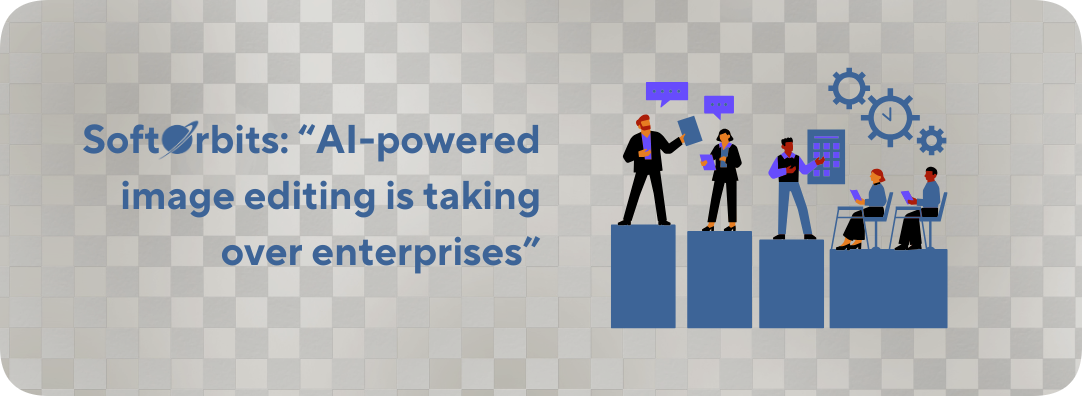Established in 2006 by its founder Eugene Ustinenkov, SoftOrbits, an image editing software development company, has recently experienced an influx of enterprise clients, all willing to adopt its new AI-powered utilities despite the fact that they deliberately offer no generative capabilities.
Earlier this year SoftOrbits introduced multiple AI features to its most prominent utilities, focusing on automating non-creative technical tasks like fixing lighting and removing backgrounds from images, and this strategy has proven to be successful.
“This increase in businesses interested in AI-powered editing tools highlights a shift in the mindset of many business owners, and we feel that this is highly important to note for other development teams who work in the same niche,” says Eugene Ustinenkov, CEO of SoftOrbits and AlarmFront.
AI and the backlash
As Ustinenkov comments, while there are many opponents to the idea of AI usage, most of the criticisms are aimed at generative AI functionalities. Many photographers express their concerns about generative AI and the way businesses intend to use it, feeling that this can endanger their jobs and create other ethical problems.
Most critics agree that AI shouldn’t replace artists, and any company that aims to save money by focusing on AI’s generative capabilities acts against human expression and everything that makes art meaningful.
At the same time, AI algorithms are already massively used to improve the quality of photographs taken on smartphones. They have become so prominent that it would actually be difficult to use an iPhone camera and gallery while trying to actively avoid its behind-the-scenes processing. Eugene Ustinenkov notes that this is a clear example of AI working for everyone’s benefit: “If all it does is increase convenience for everyone, then there is no debate at all”.
Why companies choose AI-powered editing over image generation
If AI can be used for this purpose, then there is no reason why it shouldn’t be used to speed up editing processes and deal with mundane repetitive tasks, says Eugene.
“Companies that bet on improving their image editing process instead of trying to generate marketing content from scratch are always going to stay ahead. It’s not just a matter of public backlash against AI-generated images, however. The thing is, even fully generated images will still require expert editing at the end of the day. If you choose to rely on AI to speed up and simplify this process you will win 100% of the time, whether or not you generate images,” says Eugene Ustinenkov, CEO of SoftOrbits, Candidate of Technical Sciences.
As Eugene adds, while the idea of fully generated images used in marketing sounds great for any business owner, the reality is often disappointing. While technology evolves rapidly, AI images are still highly recognizable, and many people have already grown tired of them, meaning that these pictures won’t be effective for marketing purposes.
At the same time, implementing AI algorithms into your editing software still cuts the expenses significantly, saves time, and shields you from criticism.
“We make the same arguments when we meet our new enterprise clients, and a lot of the time we discover that they’ve already come to the same conclusion on their own. While there are still many companies who will choose a fully generated approach, we believe that despite their claims, this won’t be the only viable marketing strategy in the future,” says Hannes Jansen, writer and editor at SoftOrbits.
The state of the industry and future predictions
The team behind SoftOrbits believes that this middle-ground approach is going to stick, eventually becoming a standard in the niche. Right now, the image editing software industry is in turmoil caused by the rapid advancement of AI and all of the implications that come with it, but the tides are about to settle, the team believes.
“Everyone is used to AI being a part of our lives already, and this surprisingly quick adaptation to one of the most impressive and game-changing technologies of the century makes sense considering just how intuitive AI really is. Most of us treat it as a personal helper for any task we need to deal with, and it does an amazing job at fulfilling its purpose. As soon as we stop treating it as a thing that replaces people, and view it as a remarkable tool, it all settles into its rightful places,” says Eugene Ustinenkov, CEO of SoftOrbits with over 10 years of software development experience.
SoftOrbits plans to integrate more AI functionalities similar to what we’ve already seen in the future and predicts that more and more companies will follow this philosophy as well.














